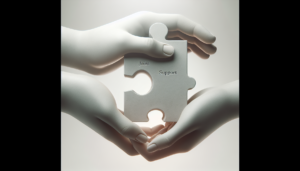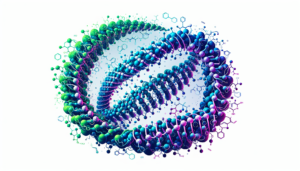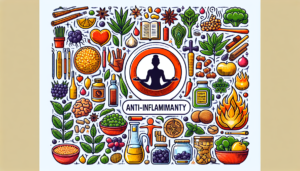Discovering Calm Through Meditation and Mindfulness
Discovering Calm Through Meditation and Mindfulness
Understanding Meditation and Mindfulness
Meditation and mindfulness are practices that have been utilized for thousands of years, rooted in various spiritual traditions. In contemporary society, they have transcended their traditional roles, offering valuable techniques for achieving mental clarity and emotional balance. While meditation is often viewed as the practice of focusing the mind, mindfulness is about awareness—being present in the moment without judgment. Together, they create a pathway to inner peace.
The Benefits of Meditation
Engaging in meditation has a plethora of benefits for both mental and physical health. Research has consistently shown that regular meditation can lead to:
-
Reduced Stress: Meditation practices can lower cortisol levels, the hormone associated with stress. This biochemical shift enhances one’s ability to cope with daily pressures.
-
Improved Emotional Well-being: Meditators often report feeling happier and more balanced, thanks to the regulation of mood through mindfulness.
-
Enhanced Focus and Concentration: Meditation trains the mind to maintain focus on a single task, improving productivity in both personal and professional arenas.
-
Better Sleep: Engaging in meditation before bedtime can calm the mind, helping individuals to drift off more easily.
- Lower Blood Pressure: Mindfulness practices can lead to better cardiovascular health by reducing stress levels, which contributes to lower blood pressure.
The Science Behind Mindfulness
Mindfulness, though simple in concept, demands practice. Studies show that practicing mindfulness alters the structure of the brain. Key findings include:
-
Changes in the Amygdala: Regular mindfulness practice can shrink the amygdala, the brain’s fear center, leading to reduced anxiety and a more adaptable emotional response to stress.
-
Increased Gray Matter: Research has indicated that mindfulness may increase gray matter density in areas of the brain associated with sensory perception, memory, and emotion regulation.
- Enhanced Connectivity: Mindfulness improves connections within brain networks linked to attention and self-regulation, paving the way for improved mental resilience.
Effective Meditation Techniques
Engaging in different meditation techniques can deepen your practice. Here are some effective methods:
1. Guided Meditation
This technique involves listening to a guide or teacher who leads you through the meditation process. It can involve visualization, body scans, or focusing on specific themes such as gratitude or love.
2. Mindfulness Meditation
In this practice, you focus on your breath and observe your thoughts without getting attached to them. The goal is to become aware of the present moment, leading to greater clarity and peace.
3. Loving-Kindness Meditation (Metta)
This practice encourages individuals to cultivate love and compassion for themselves and others. By repeating phrases such as "May I be happy, may I be healthy," practitioners expand their emotional focus.
4. Body Scan
The body scan is a technique where individuals focus on different parts of their body, noting physical sensations. It aids in grounding in the present moment and enhances bodily awareness.
5. Transcendental Meditation (TM)
TM involves the use of a mantra to settle the mind into a state of profound rest and relaxation. Practitioners typically meditate twice daily for about 20 minutes.
Mindfulness in Everyday Life
Incorporating mindfulness into daily routines can substantially impact overall well-being. Here’s how to practice mindfulness in everyday activities:
1. Mindful Eating
Instead of rushing through meals, take the time to savor every bite. Notice the taste, texture, and aroma of your food. This practice can reduce overeating and enhance enjoyment.
2. Mindful Walking
Whether walking in nature or commuting, pay attention to each step. Notice the sensations in your feet and legs, and observe your surroundings.
3. Mindful Communication
When talking with others, focus entirely on the conversation without distractions. This not only improves relationships but also makes you a more empathetic listener.
4. Mindful Breathing
Take a few moments throughout the day to focus on your breath. Inhale deeply, allowing your chest and abdomen to expand, then exhale slowly. This can be a quick anchor throughout your day.
5. Mindful Transition
Use transitions—like waiting for a bus or standing in line—as moments to practice mindfulness. Observe your thoughts, feelings, and sensations.
Creating a Mindfulness and Meditation Space
Establishing a designated space for meditation can boost your practice. Here are key considerations:
1. Choose a Quiet Location
Find a spot in your home that is free from distractions. This could be a room, corner, or even outside.
2. Create Ambiance
Consider adding elements that promote tranquility—soft lighting, soothing colors, or calming scents such as lavender or sandalwood.
3. Comfortable Seating
Ensure you have a comfortable seat or cushion to facilitate extended periods of meditation. This helps prevent discomfort and distraction.
4. Minimize Disruptions
Keep your phone on silent, and inform family members or housemates of your meditation time to minimize interruptions.
Potential Challenges in Meditation and Mindfulness
While the benefits are profound, individuals may encounter obstacles in their meditation journey:
1. Restlessness
Restlessness and constant thoughts can make it difficult to meditate. Acknowledge these thoughts and gently return your focus to your breath.
2. Expectations
Having expectations about what meditation should feel like can lead to frustration. Let go of these expectations and embrace wherever you are in your journey.
3. Time Constraints
Finding time can be challenging, but even a few minutes a day can be beneficial. Start small and gradually build your practice.
4. Consistency
Building a habit takes time. Set a consistent schedule, such as meditating at the same time each day, to help establish the routine.
5. Comparison
Avoid comparing your progress with others. Meditation is a personal journey that varies significantly from one individual to another.
The Role of Technology in Meditation
Modern technology provides resources that can enhance meditation and mindfulness practices:
1. Apps for Meditation
There are numerous apps available that offer guided meditations, timers, and reminders. Some popular options include Headspace, Calm, and Insight Timer.
2. Online Communities
Engaging with online communities can provide support and encouragement. Many websites and forums offer discussion groups, sharing experiences and tips.
3. YouTube Channels
Various channels offer free guided meditation videos that can help practitioners at any level. Look for those that align with your interests.
4. Podcasts and Audiobooks
Meditation-focused podcasts or audiobooks can provide insights into mindfulness philosophy, practices, and techniques.
5. Virtual Classes
Participating in online classes allows for guided instruction and community involvement, which can enhance motivation and commitment.
Integrating Meditation and Mindfulness into Your Routine
To successfully integrate these practices into your life, consider the following strategies:
1. Set Realistic Goals
Start with a manageable amount of time, such as five to ten minutes, and gradually increase as you become comfortable.
2. Establish a Routine
Meditate at the same time each day to create a habit. Whether morning, lunch, or evening, consistency reinforces the practice.
3. Incorporate Rituals
Consider incorporating rituals, such as lighting a candle or using a specific cushion, to signal the start of your practice.
4. Practice Patience
Recognize that meditation is a skill that takes practice. Allow yourself to be a beginner without pressure.
5. Celebrate Progress
Acknowledge your progress, however small. Each moment spent in meditation is a step toward greater mindfulness in your daily life.
Cultivating a Mindful Community
Having a supportive community can enhance one’s experience with meditation and mindfulness:
1. Join Local Groups
Seek out local meditation or mindfulness groups. Practicing with others can provide motivation, support, and shared experiences.
2. Attend Workshops or Retreats
Consider attending workshops or retreats that focus on meditation. This immersive experience can deepen one’s practice.
Introduce friends or family members to meditation and mindfulness practices. Sharing your journey can foster stronger bonds and provide mutual encouragement.
4. Online Forums
Engage with online forums or social media groups dedicated to mindfulness and meditation, providing a space for sharing tips and challenges.
5. Create Accountability Partners
Partner with someone who shares an interest in meditation. Hold each other accountable for maintaining your practice.
The Future of Mindfulness and Meditation
As interest in mental wellness continues to rise, so does the availability of resources and scientific research focused on meditation and mindfulness. These practices will likely play an increasingly integral role in holistic health approaches and therapeutic interventions.
1. Integration into Education
Schools are beginning to incorporate mindfulness practices into their curriculums, teaching children techniques for managing stress and enhancing focus.
2. Workplace Mindfulness
Businesses are recognizing the value of mindfulness training to improve employee well-being, productivity, and collaboration.
3. Public Health Focus
As research substantiates the benefits of mindfulness, it may become a standard component in public health initiatives aimed at reducing stress and enhancing quality of life.
4. Adaptation to Various Cultures
Mindfulness practices are being adapted into various cultural contexts, making them accessible to diverse populations.
5. Future Technological Innovations
Emerging technologies may further personalize meditation experiences, using biometric feedback to enhance practice effectiveness and engagement.
Mindful Reflection
Regularly reflecting on your meditation journey can enhance the experience. Journaling about your thoughts, feelings, and progress can help solidify lessons learned and reinforce commitment to the practice.
Ultimately, discovering calm through meditation and mindfulness is an individual journey that can lead to tremendous growth, resilience, and fulfillment. As you explore these practices, remember to be patient and compassionate with yourself, welcoming each moment with an open heart and mind.








